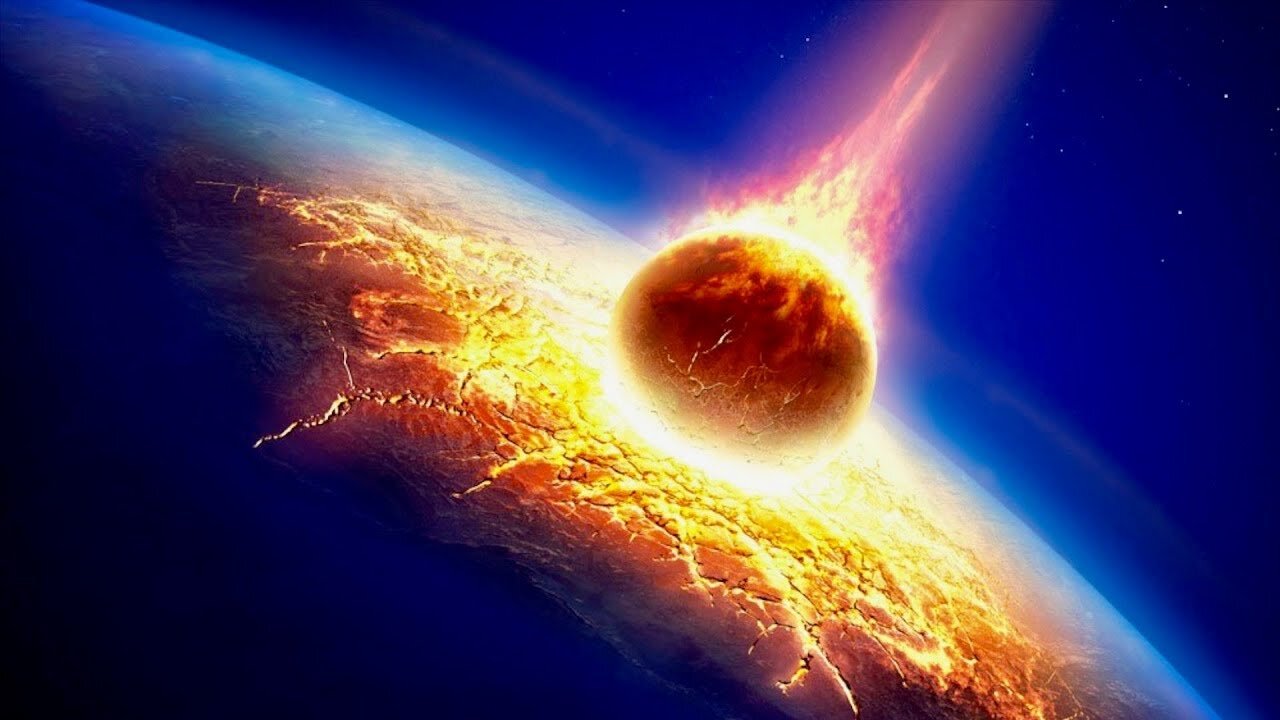Premium Only Content

How NASA Will Respond To A Planet Killer Asteroid - Avoiding Global Extinction
NASA’s Bold Plan to Save Earth From Killer Asteroids. Just beyond Earth’s home in the solar system, about 94 million miles from the Sun, a coal-black asteroid slowly rotates as it orbits our star. It’s about 1,650 feet across, with a slight bulge around the middle, like a spinning top. Its low density means it’s not solid, but instead it’s likely a crumbly pile of carbon-rich rocks held together by gravity. The asteroid is called Bennu, and every six years, its egg-shaped orbital path brings it just 185,000 miles from Earth — roughly 53,000 miles closer than our moon. In about 200 years, there’s a 1-in-2,700 chance it could sail close enough for Earth’s gravity to reel it in. That would be very bad.
The impact would excavate a crater nearly three miles wide and 1,500 feet deep. Locations three miles away would be buried under 50 feet of rock raining down. It would trigger a 6.7-magnitude earthquake. But the real damage would come from the air burst, caused by the meteor hurtling through the atmosphere, which could collapse buildings and tear down trees up to 30 miles away.
Luckily for us, asteroids the size of Bennu, and giant asteroids like the one that helped kill the dinosaurs 65 million years ago, don’t cross Earth’s path often. But smaller ones do all the time. They enter our atmosphere as meteors, where many blow up in mid-air; some make their way to the ground or sea. The good news is that we’re getting better at finding them — but we’re still unprepared if one does make its way to Earth.
Partly to help with this, a NASA spacecraft called OSIRIS-REx is on its way to Bennu, where it will collect several pounds of asteroid samples and return them to Earth. By baking those samples and melting them down, scientists will learn what the asteroid is like, how the solar system’s rocky worlds were made, and how to protect Earth from these errant rocks — whether by pushing them away, breaking them up, or using the sun’s warmth to nudge them a different direction.
In that way, Bennu may become the asteroid that saves us all.
NASA is on an asteroid binge these days. Earlier in January, the space agency announced it is planning two more missions to these solar system crumbs over the next few years. The Lucy spacecraft will fly to Jupiter and study its Trojan asteroids, which trail behind the giant planet. The Psyche mission will travel to an iron asteroid thought to be a leftover planetary core, whose mantle and crust were lost to time and fiery collisions.
These explorations will provide planetary scientists with a wealth of new information, says Bill Bottke, who studies asteroids at the Southwest Research Institute in San Antonio.
“Locked in asteroids are stories that are telling us what was going on when the planets formed, when the solar nebula was still around,” he says. What processes does it take to form a planet?”
Fortunately, asteroid studies also tell us what it takes to wreck a planet. As Bennu whirls around its axis, its inky surface absorbs sunlight like asphalt on a hot day. As it rotates into the dark, that warmth radiates into space and it cools down again. This temperature change gives the asteroid a tiny nudge, called the Yarkovsky effect, which over time will change its orbit.
One of OSIRIS-REx’s main goals is to measure this phenomenon, says Daniel Scheeres, an astronomer at the University of Colorado who works on the project.
“After the mission, we should be able to update all these impact probabilities, and hopefully it will go down,” he says. “Just by testing the theory and validating it with more precise measurements, that can help all of our other predictions of the Yarkovsky effect for all other asteroids.”
Right now we know of about 723,367 asteroids in the solar system, and astronomers from universities and observatories around the world discover new ones almost every day. Based on statistical analysis and detailed searches, scientists think they’ve found more than 90 percent of asteroids about half a mile wide or larger, each of which would cause global extinctions if they impacted earth.
Dedicated searches have also found about 25 percent of the asteroids that measure at least 460 feet across, or roughly the size of a football stadium. But more than a million small asteroids — like one the size of a city bus that exploded over Chelyabinsk, Russia, three years ago — are thought to be out there.
Music: The Walrath (Escape From Hell Mix) by Dhruva Aliman
Amazon - https://amzn.to/2B9tGa7
https://music.apple.com/us/artist/dhruva-aliman/363563637
https://dhruvaaliman.bandcamp.com/album/road-of-fortunes
http://www.dhruvaaliman.com/
Spotify - https://open.spotify.com/artist/5XiFCr9iBKE6Cupltgnlet
#space
#spaceforce
#asteroid
-
 2:53
2:53
Seeker Land
3 months agoHow 14 Wolves Changed The Path Of Rivers in Yellowstone Park - Amazing True Story
97 -
 1:00:32
1:00:32
VINCE
3 hours agoNYC Has Been Seized By The Communists | Episode 162 - 11/05/25
138K149 -
 1:33:32
1:33:32
Graham Allen
3 hours agoTold You The War Was FAR From Over… The Blue Wave Just Proved It! Evil Is Fighting Back!
88.6K89 -
 LIVE
LIVE
Badlands Media
9 hours agoBadlands Daily: November 5, 2025
2,349 watching -
 LIVE
LIVE
Wendy Bell Radio
7 hours agoLike Sheep To Slaughter
7,056 watching -
 1:13:30
1:13:30
DML
3 hours agoDML LIVE: NYC Goes Socialist: Mamdani’s Victory
47.1K14 -
 1:04:43
1:04:43
Chad Prather
15 hours agoTruth on Trial: When Fear Meets Faith
74.1K41 -
 LIVE
LIVE
LFA TV
14 hours agoLIVE & BREAKING NEWS! | WEDNESDAY 11/5/25
4,163 watching -
 1:57:16
1:57:16
The Chris Salcedo Show
14 hours ago $0.15 earnedDems Win In Dem States...And They Celebrate?
37.3K16 -
 1:04:43
1:04:43
Crypto Power Hour
12 hours ago $0.04 earnedPsychology Of Crypto Market Cycles
53.8K6